我是靠谱客的博主 朴素抽屉,这篇文章主要介绍Sipeed MAIX Dock K210开箱试用凑下字数废话不多说,拍两张开发板照片给大佬们过下目简介也有了,照片也看过了,接下来再不来点干货怕是过不去了总结,现在分享给大家,希望可以做个参考。
凑下字数
这两年人工智能是发展的热火朝天,咱也不能落伍,无意之间发现了勘智 K210这款芯片,价格便宜但是性能不俗,主频400MHz,还能再超频,双核,自带KPU,甚是强大,截两张官方datasheet关于这个芯片的简介,大家来感受下
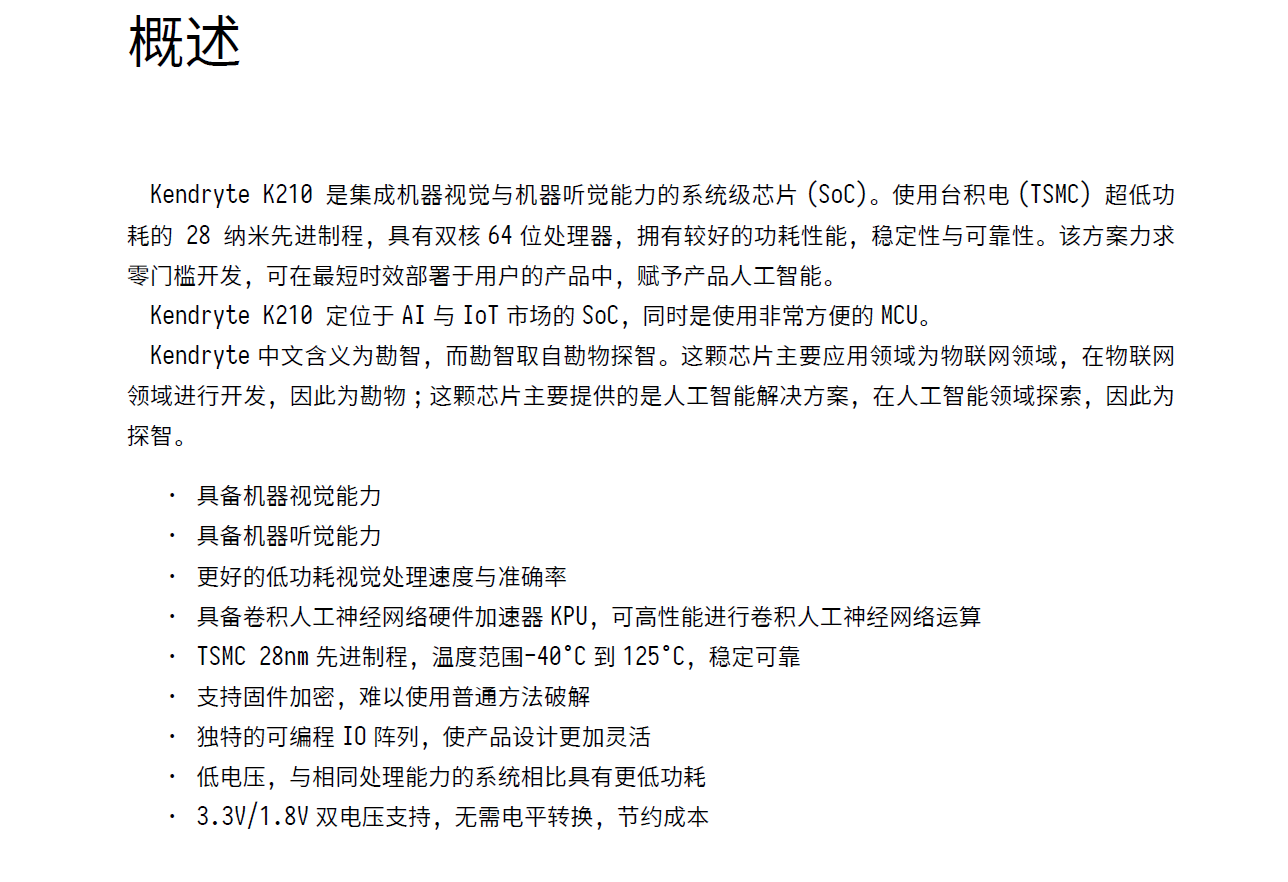

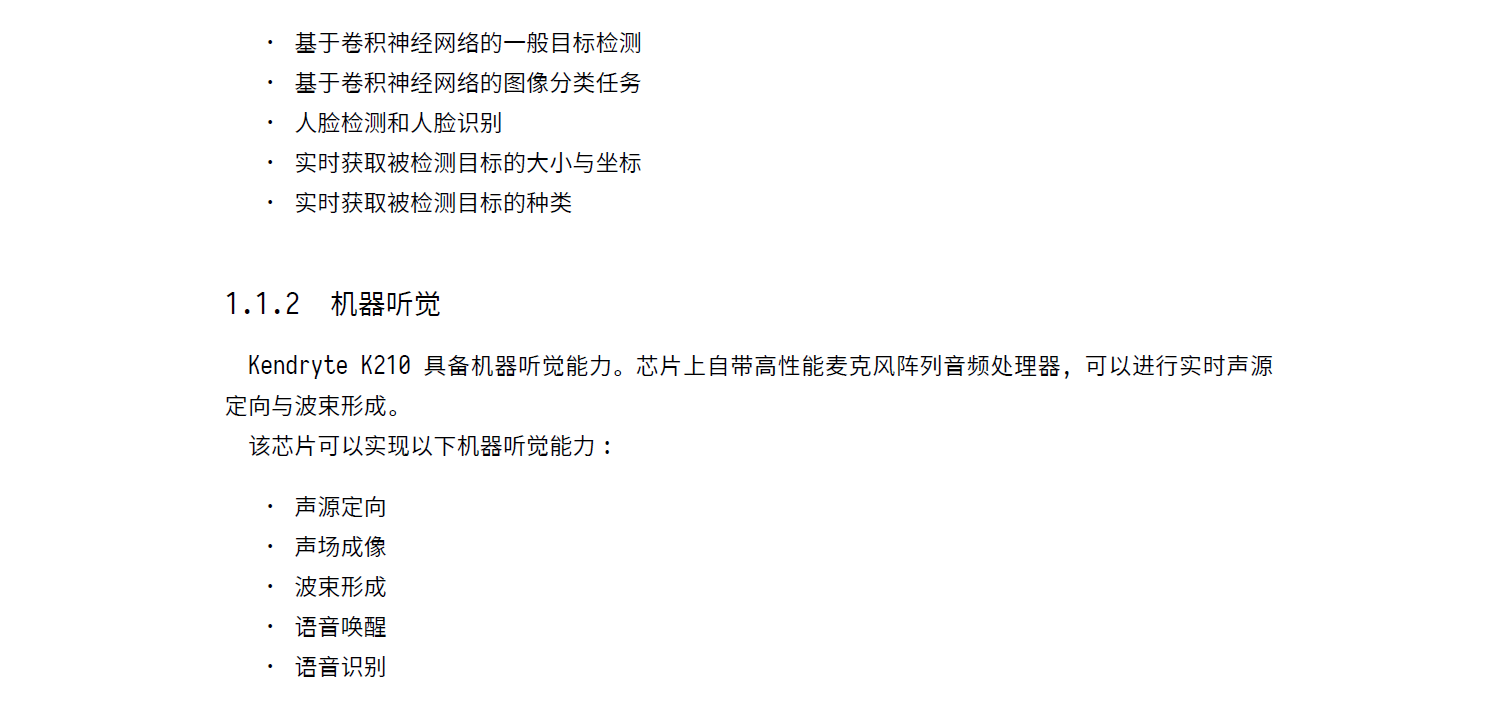

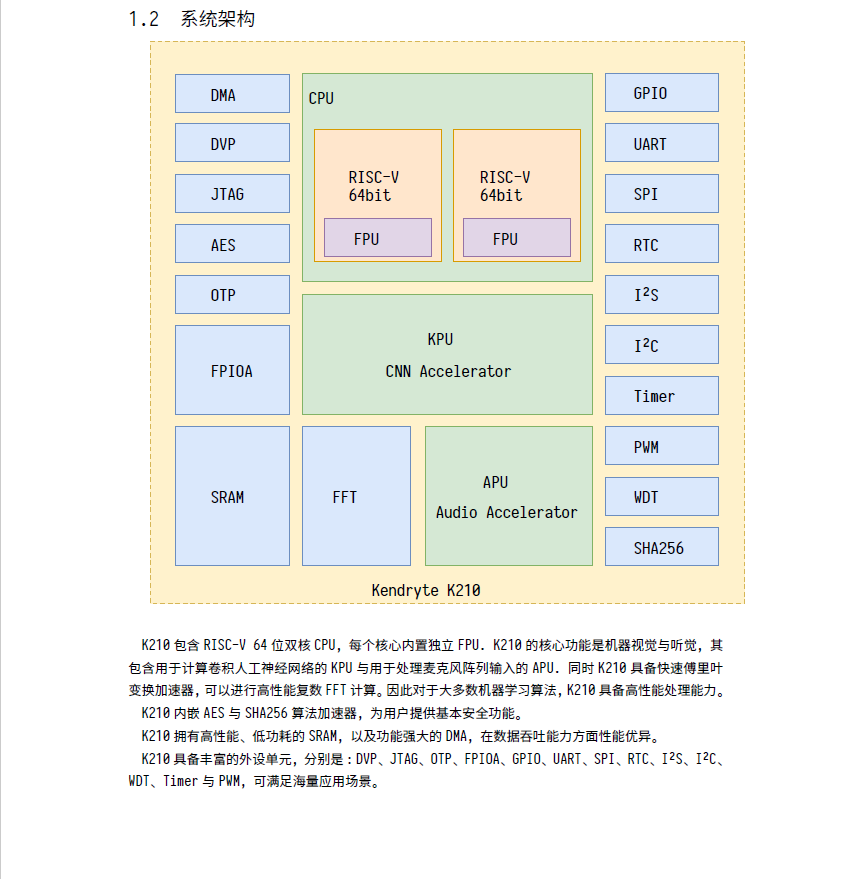
不知道大家有没有被震撼到,这玩意真能这么牛

废话不多说,拍两张开发板照片给大佬们过下目
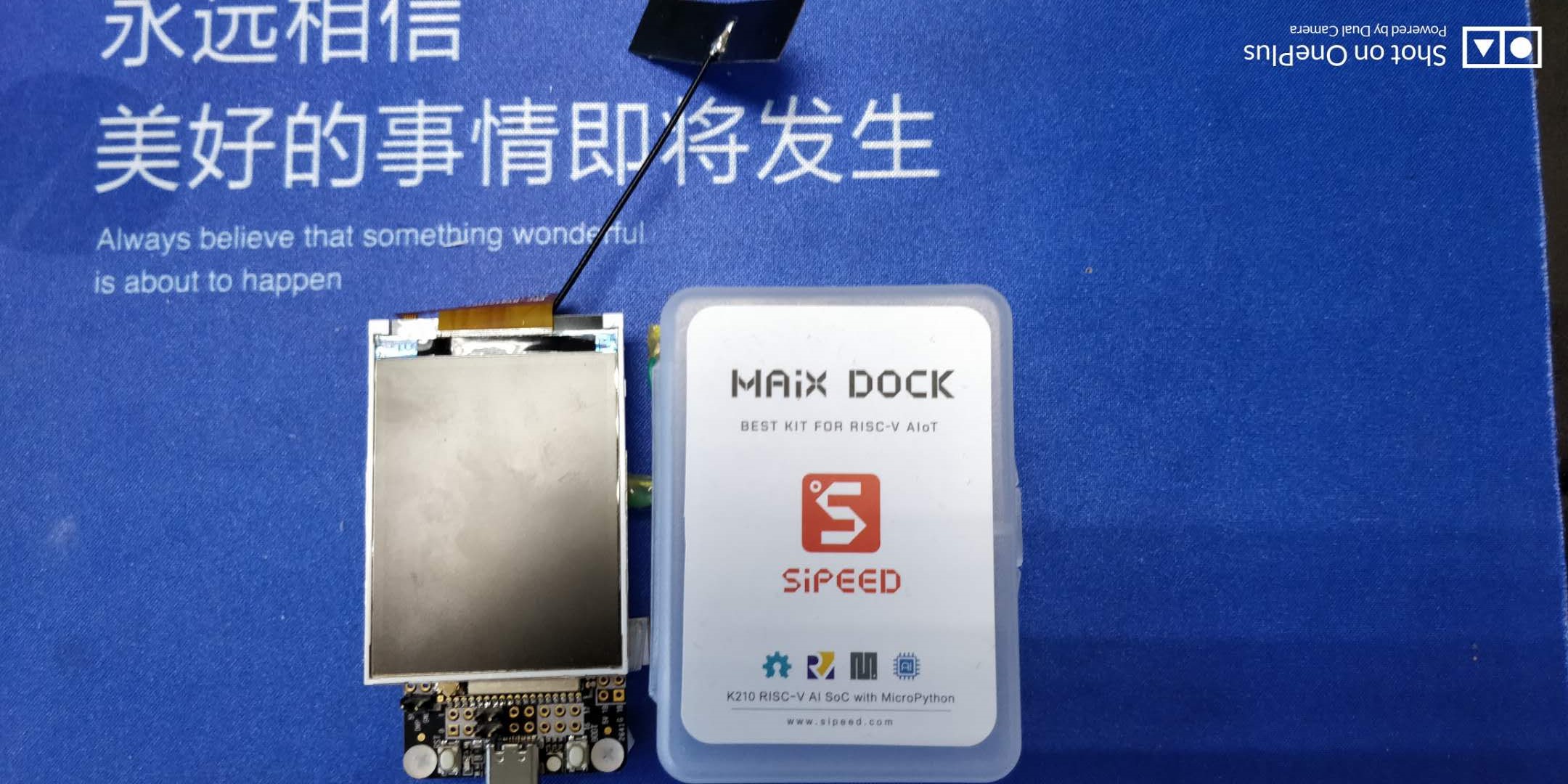
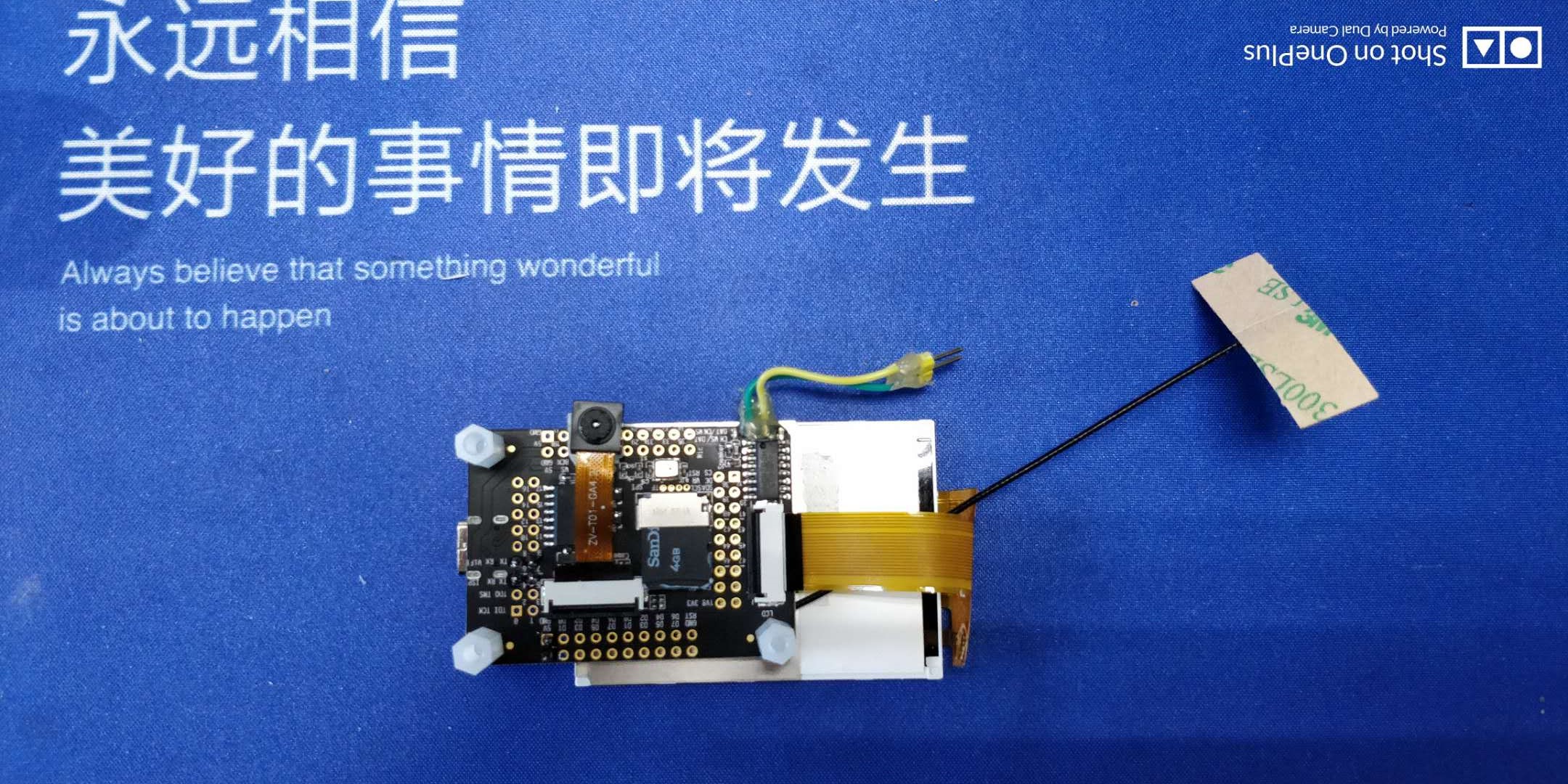
图片背景是某米的鼠标垫,这个广告打的,某总是不是要打点钱过来
这个是被我改造过的,把屏幕黏在了开发板的模块上,不得不说买开发板送的那个小盒子我还是挺喜欢的
简介也有了,照片也看过了,接下来再不来点干货怕是过不去了
好了接下来我们按照官方的教程先跑一个人脸识别,贴下源码
关于源码和教程在官方的网站和gothub都可以找到,等会我会贴出来
复制代码
1
2
3
4
5
6
7
8
9
10
11
12
13
14
15
16
17
18
19
20
21
22
23
24
25
26
27
28
29
30
31
32
33
34
35
36
37
38
39
40
41
42
43
44
45
46
47
48
49
50
51
52
53
54
55
56
57
58
59
60
61
62
63
64
65
66
67
68
69
70
71
72
73
74
75
76
77
78
79
80
81
82
83
84
85
86
87
88
89
90
91
92
93
94
95
96
97
98
99
100
101
102
103
104
105
106
107
108
109
110
111
112
113
114
115
116
117
118
119
120
121
122
123
124
125# Untitled - By: Administrator - 周四 5月 7 2020 import sensor import image import lcd import KPU as kpu import time from Maix import FPIOA, GPIO import gc from fpioa_manager import fm from board import board_info task_fd = kpu.load(0x200000) task_ld = kpu.load(0x300000) task_fe = kpu.load(0x400000) clock = time.clock() index_name = 0 fm.register(board_info.BOOT_KEY, fm.fpioa.GPIOHS0) key_gpio = GPIO(GPIO.GPIOHS0, GPIO.IN) start_processing = False def set_key_state(*_): global start_processing start_processing = True key_gpio.irq(set_key_state, GPIO.IRQ_RISING, GPIO.WAKEUP_NOT_SUPPORT) lcd.init() lcd.rotation(2) sensor.reset() sensor.set_pixformat(sensor.RGB565) sensor.set_framesize(sensor.QVGA) sensor.set_hmirror(1) sensor.set_vflip(1) sensor.run(1) anchor = (1.889, 2.5245, 2.9465, 3.94056, 3.99987, 5.3658, 5.155437, 6.92275, 6.718375, 9.01025) # anchor for face detect dst_point = [(44, 59), (84, 59), (64, 82), (47, 105), (81, 105)] # standard face key point position a = kpu.init_yolo2(task_fd, 0.5, 0.3, 5, anchor) img_lcd = image.Image() img_face = image.Image(size=(128, 128)) a = img_face.pix_to_ai() record_ftr = [] record_ftrs = [] names = ['Mr.1', 'Mr.2', 'Mr.3', 'Mr.4', 'Mr.5', 'Mr.6', 'Mr.7', 'Mr.8', 'Mr.9', 'Mr.10'] while(1): img = sensor.snapshot() clock.tick() code = kpu.run_yolo2(task_fd, img) if code: #print(code) for i in code: # Cut face and resize to 128x128 a = img.draw_rectangle(i.rect()) face_cut = img.cut(i.x(), i.y(), i.w(), i.h()) face_cut_128 = face_cut.resize(128, 128) a = face_cut_128.pix_to_ai() #a = img.draw_image(face_cut_128, (0,0)) # Landmark for face 5 points fmap = kpu.forward(task_ld, face_cut_128) plist = fmap[:] le = (i.x()+int(plist[0]*i.w() - 10), i.y()+int(plist[1]*i.h())) re = (i.x()+int(plist[2]*i.w()), i.y()+int(plist[3]*i.h())) nose = (i.x()+int(plist[4]*i.w()), i.y()+int(plist[5]*i.h())) lm = (i.x()+int(plist[6]*i.w()), i.y()+int(plist[7]*i.h())) rm = (i.x()+int(plist[8]*i.w()), i.y()+int(plist[9]*i.h())) a = img.draw_circle(le[0], le[1], 4) a = img.draw_circle(re[0], re[1], 4) a = img.draw_circle(nose[0], nose[1], 4) a = img.draw_circle(lm[0], lm[1], 4) a = img.draw_circle(rm[0], rm[1], 4) # align face to standard position src_point = [le, re, nose, lm, rm] T = image.get_affine_transform(src_point, dst_point) a = image.warp_affine_ai(img, img_face, T) a = img_face.ai_to_pix() #a = img.draw_image(img_face, (128,0)) del(face_cut_128) # calculate face feature vector fmap = kpu.forward(task_fe, img_face) feature = kpu.face_encode(fmap[:]) #print(feature) reg_flag = False scores = [] for j in range(len(record_ftrs)): score = kpu.face_compare(record_ftrs[j], feature) scores.append(score) max_score = 0 index = 0 for k in range(len(scores)): if max_score < scores[k]: max_score = scores[k] index = k if max_score > 85: a = img.draw_string(i.x(), i.y(), ("%s :%2.1f" % ( names[index], max_score)), color=(0, 255, 0), scale=2) print("person: " + names[index]) else: a = img.draw_string(i.x(), i.y(), ("X :%2.1f" % ( max_score)), color=(255, 0, 0), scale=2) if start_processing: record_ftr = feature record_ftrs.append(record_ftr) print("append person: " + names[index_name]) index_name += 1 start_processing = False break fps = clock.fps() # print("%2.1f fps" % fps) a = lcd.display(img) gc.collect() # kpu.memtest() #a = kpu.deinit(task_fe) #a = kpu.deinit(task_ld) #a = kpu.deinit(task_fd)
用官方提供的IDE跑起来试下,下面是效果展示
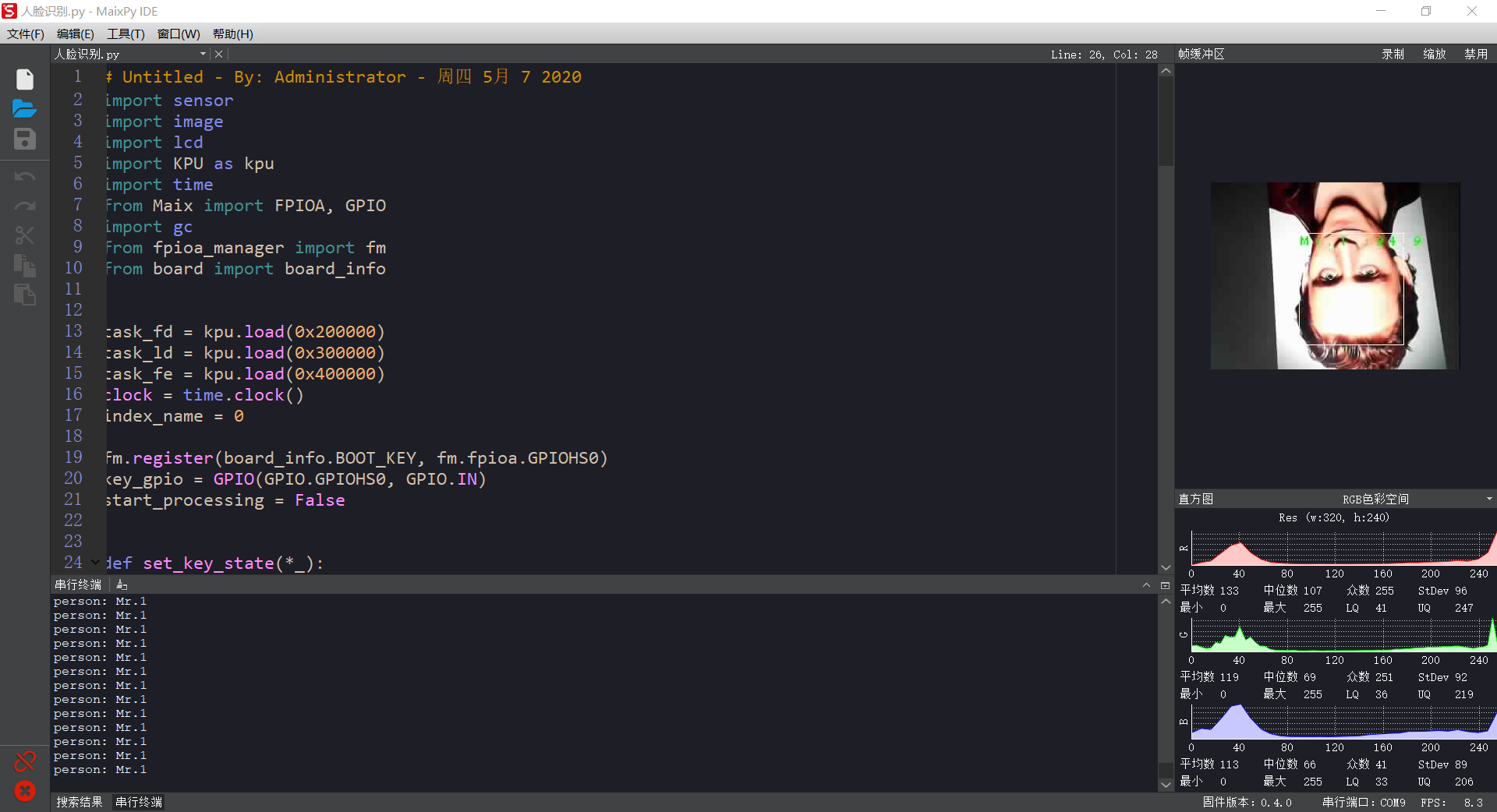

官方资源地址
例程
工具
官方github
总结
K210的可玩性还是挺高的,随着AI的发展这种低功耗低成本的方案需求肯定会越来越多,美中不足的是K210这个芯片的内存有点小,刨去AI部分用掉的留给用户的并不多,希望能再不就的将来K210能够衍生出更多的系列来供大家使用
更多精彩内容欢迎关注小熊嵌入式

最后
以上就是朴素抽屉最近收集整理的关于Sipeed MAIX Dock K210开箱试用凑下字数废话不多说,拍两张开发板照片给大佬们过下目简介也有了,照片也看过了,接下来再不来点干货怕是过不去了总结的全部内容,更多相关Sipeed内容请搜索靠谱客的其他文章。
本图文内容来源于网友提供,作为学习参考使用,或来自网络收集整理,版权属于原作者所有。









发表评论 取消回复